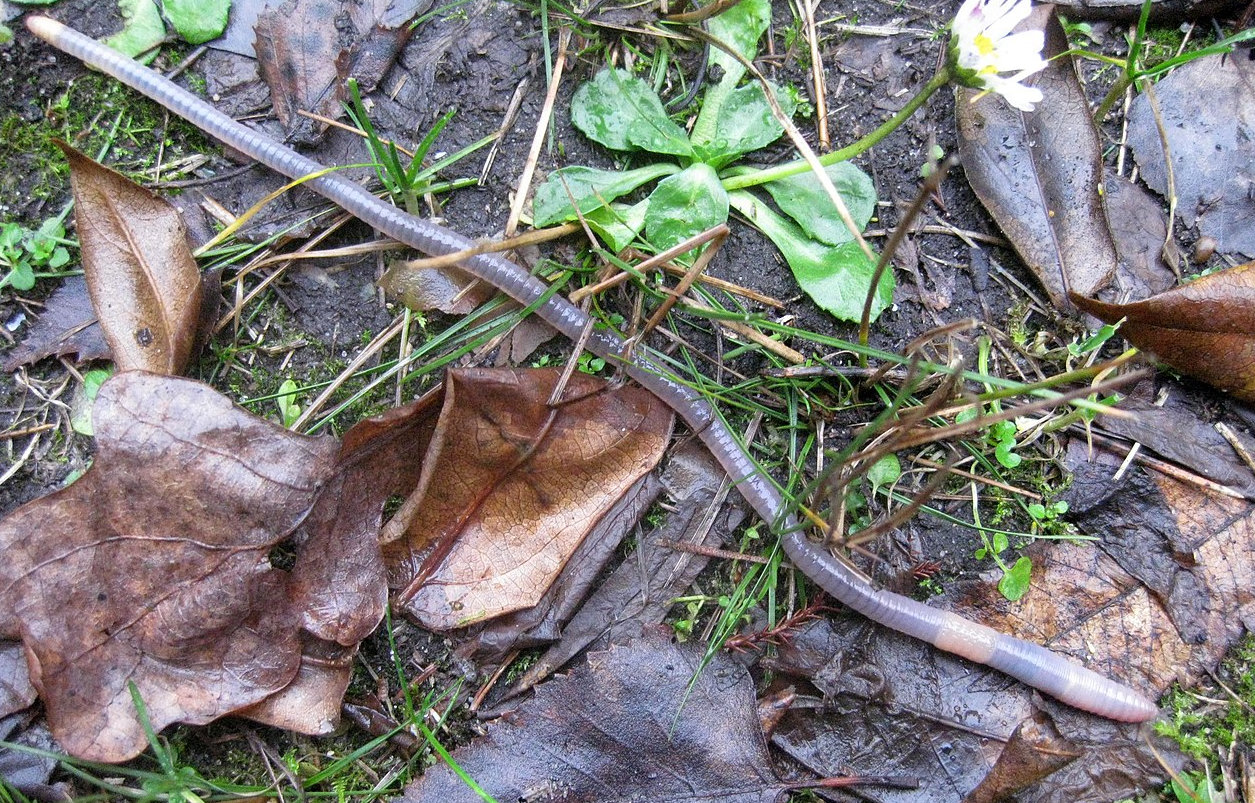Earthworms and white worms
Earthworms and their smaller cousins, the white worms, are annelids in the subclass Oligochaeta, classified with the leeches in the Class Clitellata. They are abundant in garden soils and compost heaps. Earthworms are typical annelids with elongate tubular segmented bodies with obvious lines or rings around the body that indicate the segments. Globally, there are about 10,000 species, some of which run to as long as 2-3m, but they are so contractile it really isn't easy to measure a worm. Earthworms look simple in external structure, but have complex internal organs, particularly the nervous, circulation and reproductive systems. Some small oligochaetes live in freshwater and are covered in our page here.
Species in Britain and Ireland
In Britain and Ireland we have 27 native species of earthworm, with a number of other non-native species that are found mainly in glasshouses and botanic gardens. When at rest, adult earthworms are 30 – 200mm long and up to 10mm wide, depending on the species, but their shape varies enormously with the state of contraction. They are pinkish brown or whitish yellow in colour.
Garden earthworms occupy various habitats. Some common worms live in permanent vertical burrows in the soil, up to 30 cm long and connected to the surface. They drag leaves into the burrow to eat, and they leave obvious worm casts of faeces by the burrows - consisting essentially of undigested soil. These worms are termed "anecic" in habit, and they include the largest worms in our gardens. Examples of anecic worms include the black-headed worm, Aporrectodea longa, grey worm, Aporrectodea caliginosa, and the lob worm, Lumbricus terrestris. The largest earthworm on record in the UK was a 40cm specimen of L. terrestris named Dave found in a Sheffield vegetable patch.
Left: Enchytraeus albidus Right : cultured colony of Grindal worms, Enchytraeus buchholzi
Biology of earthworms
Earthworms and white worms are primarily detritivores that feed on dead plant material and other organic material in soil..
Organic matter and soil particles passing through a worm’s gut is mixed with mucilage, which helps bind soil particles together. The excreted material produces a ‘crumb’ structure in soil that is beneficial for plant growth. Most worms deposit their excrement underground but some deposit muddy worm casts on the surface. As Charles Darwin found in his last major study, over a period of time, this surface deposition builds up and gradually buries objects lying on the soil surface. Worm casts can be considered a nuisance on lawns but are a great help to archaeologists! They are also very rich in available nutrients, and contain no large stones, so make the foundation for excellent soil-based potting compost. The species that produce worm casts on the surface are Lumbricus terrestris, Aporrectodea longa and Aporrectodea caliginosa.
In parts of northern Britain and Ireland, earthworm numbers have been reduced by a non-native predator, the New Zealand flatworm, Arthurdendyus triangulatus. Another non-native species, Australoplana alba, known as the Australian flatworm, is widely established in south west England and it similarly preys on earthworms.
Life cycle
Adult worms have a thickened area, known as the clitellum or saddle, which is situated about one third down the body from the head end, and this is clearly visible in most of the photos of larger worms shown above. The clitellum is used during the mating process. Earthworms and white worms are hermaphrodite animals but pair up to mate. They lie alongside each other and exchange semen. After mating, the each worm’s clitellum secretes a mucus band in which fertilization of the eggs takes place. The worm then sheds the mucus band by crawling backwards out of it. The ends of the band close up, creating a lemon-shaped egg sac or cocoon from which up to 20 baby worms will hatch when conditions are favourable. Most earthworms take a year to reach maturity and live for about 1-2 years but some have survived for eight years.
.jpg)
Grey earthworm Aporrectodea caliginosa Earthworm Lumbricus terrestris fairly fully extended
Other, smaller earthworms live on the surface of the soil and don't burrow. These are termed epigeic in habit and feed on litter and detritus. They often have strongly pigmented skins. Examples include the octagonal-tailed worm, Dendrobaena octaedra, red worm Lumbricus rubellus and little tree worm, Satchellius mammalis.

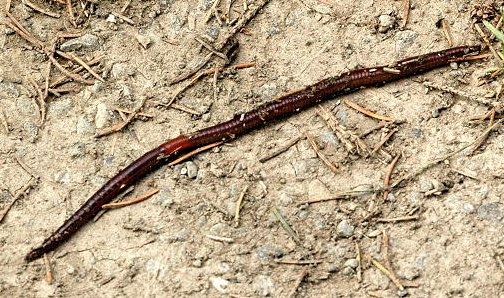
Above: Earthworm Dendrobaena octaedra Right: red worm Lumbricus rubellus
A third group of worms are called endogeic, and these have a cross between the anecic and epigeic habits. They live in the soil near the surface and make horizontal burrows, feeding on organic matter in the soil. They are often paler in colour. Species include the green worm, Allolobophora chlorotica, the rosy-tipped worm, Aporrectodea rosea and the blue-grey worm Octolasion cyaneum.
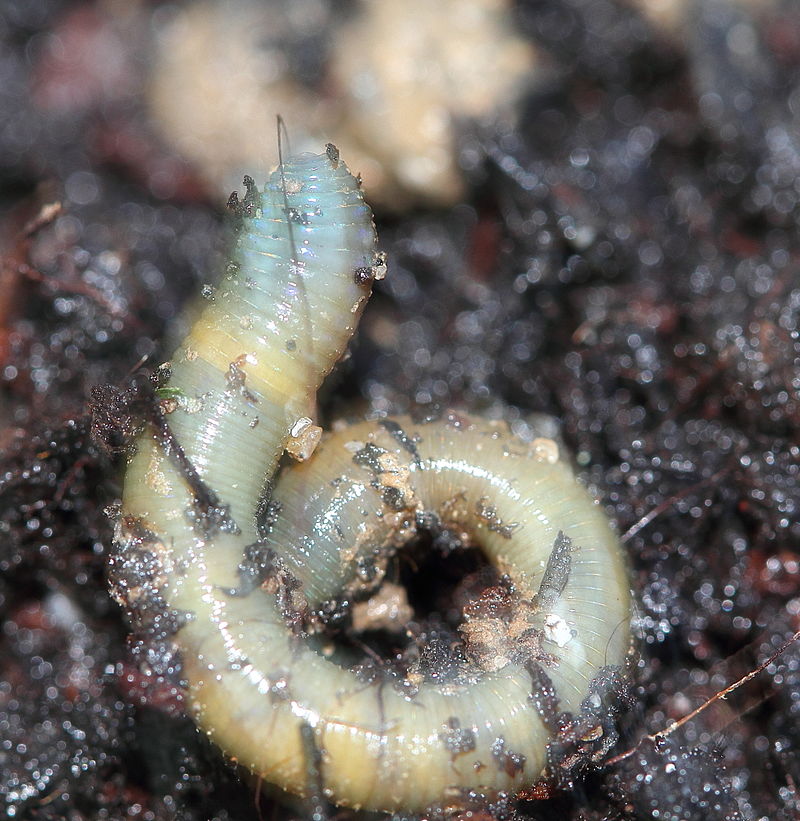
.jpg)
Left: Green worm Allolobophora chlorotica Above: Octolasion cyaneum
The last habitat group of earthworms is the compost earthworms commonly found in compost heaps, and adapted to living in wet decaying vegetation. many are red in colour (through having haemoglobin) and stripy in appearance. Common species include the brandling worm, Eisenia fetida, and compost worm, Dendrobaena veneta.
.jpg)
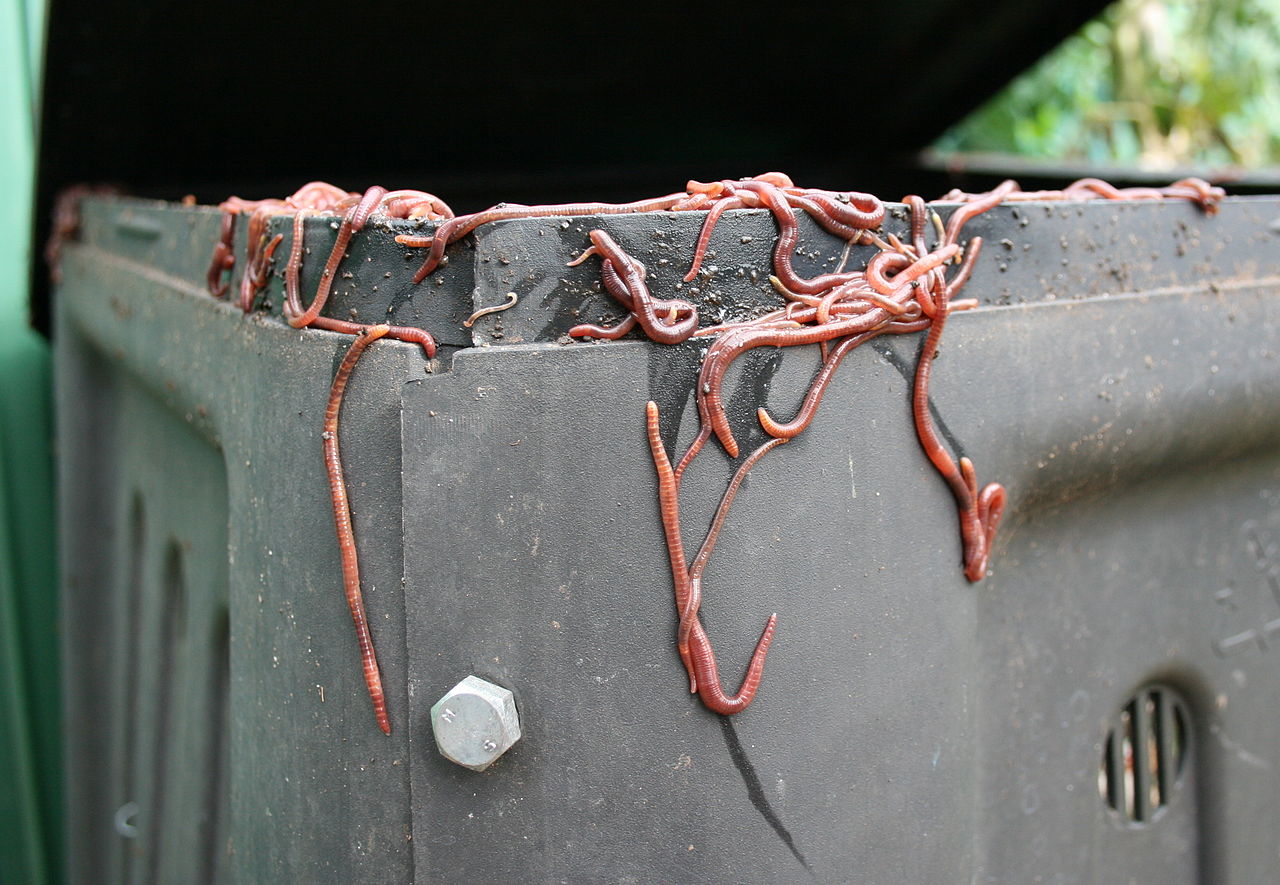
Brandling worms Eisenia foetida Left: worms rising to the top of a compost bin in wet weather, right: showing tiger stripes.
White worms
White worms are also known as pot worms or enchytraeid worms, in the oliogochaete family Enchytraeidae. There are about 70 species in Britain and Ireland. They are generally white and anatomically similar to earthworms but much smaller, up to about 15mm long. They are mainly found in soil that has been enriched with excrement or other organic matter, and much of their diet is made up of fungal threads and bacteria. They can exist in huge numbers, from about 1,000 /m2 in intensive agricultural soil up to 140,000 /m2 in acid organic peat. Two of the commonest species in Britain and Ireland are Enchytraeus albidus and Enchytraeus buchholzi - the latter also called the Grindal worm after its culture for fish feeding was promoted by Mrs Morten Grindal of Sweden.
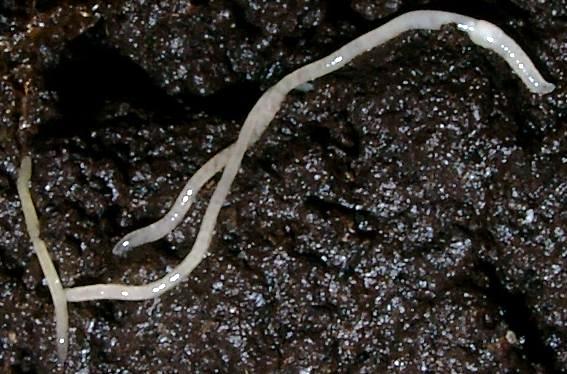
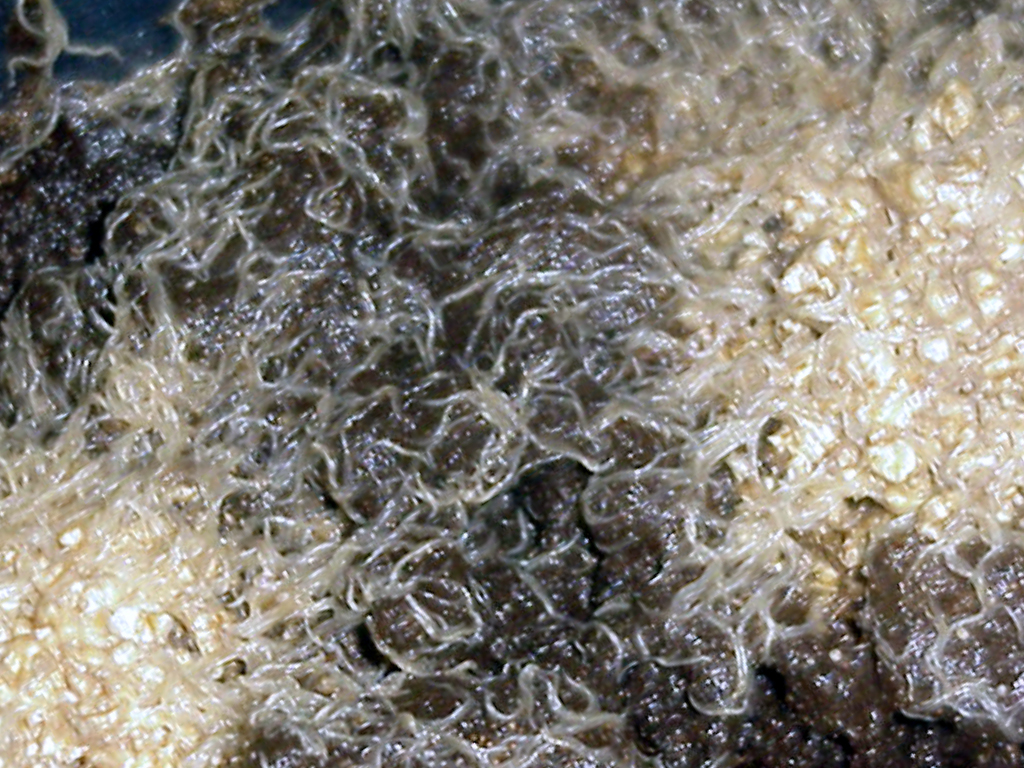
Role of earthworms in gardens
The tunnelling activities of worms improve soils by allowing water to drain away more freely, while air can reach plant roots and soil-dwelling animals. Earthworms and white worms help break down dead plant material, incorporating it into the soil and releasing nutrients that can be absorbed by plant roots. Substances contained in worm excrement help to improve soil structure.
Earthworms, such as Eisenia fetida and Dendrobaena veneta, can be purchased for use in compost bins called wormeries. They will convert vegetable peelings and other compostable kitchen waste into compost and liquid fertilizer for use in the garden. These worms are likely to find their own way into garden compost heaps that are open at the bottom and in contact with soil. They will be active in the top layer amongst the more recently added rotting plant material.
Many birds, mammals and insects prey on earthworms, making them important animals in food chains.
Other sources of information
Websites
Website of the Earthworm Society of Britain
Online earthworm identification app.
Books and monographs
Schmelz R. and and Collado, R., 2010 A guide to European terrestrial and freshwater species of Enchytraeidae (Oligochaeta). Soil Organisms 82: 1–176
Sherlock, E. (2012) Key to the earthworms of Britain and Ireland. A Field Studies Council AIDGAP key
Sims, R. W. & Gerard, B. M. (1999) Synopses of the British Fauna, vol. 31, Earthworms. Field Studies Council
Page drafted by Andrew Halstead, reviewed by Andrew Salisbury, extended and compiled by Steve Head
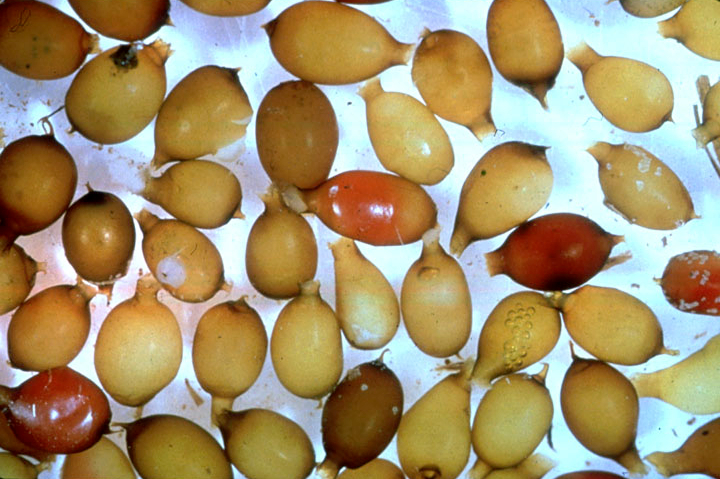
Lumbricus terrestris cocoons. These oval objects have one pinched-off end and a wider one, formed as the mucus band is shed from the worm. The hatching baby worms exit through the wider aperture. A video of this is available on YouTube here.
Earthworms and white worms
Earthworms and their smaller cousins, the white worms, are annelids in the subclass Oligochaeta, classified with the leeches in the Class Clitellata. They are abundant in garden soils and compost heaps. Earthworms are typical annelids with elongate tubular segmented bodies with obvious lines or rings around the body that indicate the segments. Globally, there are about 10,000 species, some of which run to as long as 2-3m, but they are so contractile it really isn't easy to measure a worm. Earthworms look simple in external structure, but have complex internal organs, particularly the nervous, circulation and reproductive systems. Some small oligochaetes live in freshwater and are covered in our page here.
Species in Britain and Ireland
In Britain and Ireland we have 27 native species of earthworm, with a number of other non-native species that are found mainly in glasshouses and botanic gardens. When at rest, adult earthworms are 30 – 200mm long and up to 10mm wide, depending on the species, but their shape varies enormously with the state of contraction. They are pinkish brown or whitish yellow in colour.
Garden earthworms occupy various habitats. Some common worms live in permanent vertical burrows in the soil, up to 30 cm long and connected to the surface. They drag leaves into the burrow to eat, and they leave obvious worm casts of faeces by the burrows - consisting essentially of undigested soil. These worms are termed "anecic" in habit, and they include the largest worms in our gardens. Examples of anecic worms include the black-headed worm, Aporrectodea longa, grey worm, Aporrectodea caliginosa, and the lob worm, Lumbricus terrestris. The largest earthworm on record in the UK was a 40cm specimen of L. terrestris named Dave found in a Sheffield vegetable patch.
.jpg)
Left: Grey earthworm Aporrectodea caliginosa Right: Earthworm Lumbricus terrestris fairly fully extended
Other, smaller earthworms live on the surface of the soil and don't burrow. These are termed epigeic in habit and feed on litter and detritus. They often have strongly pigmented skins. Examples include the octagonal-tailed worm, Dendrobaena octaedra, red worm Lumbricus rubellus and little tree worm, Satchellius mammalis.


Above: Earthworm Dendrobaena octaedra Right: red worm Lumbricus rubellus
A third group of worms are called endogeic, and these have a cross between the anecic and epigeic habits. They live in the soil near the surface and make horizontal burrows, feeding on organic matter in the soil. They are often paler in colour. Species include the green worm, Allolobophora chlorotica, the rosy-tipped worm, Aporrectodea rosea and the blue-grey worm Octolasion cyaneum.

.jpg)
The last habitat group of earthworms is the compost earthworms commonly found in compost heaps, and adapted to living in wet decaying vegetation. many are red in colour (through having haemoglobin) and stripy in appearance. Common species include the brandling worm, Eisenia fetida, and compost worm, Dendrobaena veneta.
Left: Green worm Allolobophora chlorotica Above: Octolasion cyaneum
The last habitat group of earthworms is the compost earthworms commonly found in compost heaps, and adapted to living in wet decaying vegetation. many are red in colour (through having haemoglobin) and stripy in appearance. Common species include the brandling worm, Eisenia fetida, and compost worm, Dendrobaena veneta.

.jpg)
Brandling worms Eisenia foetida Left: worms rising to the top of a compost bin in wet weather, right: showing tiger stripes.
White worms
White worms are also known as pot worms or enchytraeid worms, in the oliogochaete family Enchytraeidae. There are about 70 species in Britain and Ireland. They are generally white and anatomically similar to earthworms but much smaller, up to about 15mm long. They are mainly found in soil that has been enriched with excrement or other organic matter, and much of their diet is made up of fungal threads and bacteria. They can exist in huge numbers, from about 1,000 /m2 in intensive agricultural soil up to 140,000 /m2 in acid organic peat. Two of the commonest species in Britain and Ireland are Enchytraeus albidus and Enchytraeus buchholzi - the latter also called the Grindal worm after its culture for fish feeding was promoted by Mrs Morten Grindal of Sweden.


Left: Enchytraeus albidus Right : cultured colony of Grindal worms, Enchytraeus buchholzi
Biology of earthworms
Earthworms and white worms are primarily detritivores that feed on dead plant material and other organic material in soil..
Organic matter and soil particles passing through a worm’s gut is mixed with mucilage, which helps bind soil particles together. The excreted material produces a ‘crumb’ structure in soil that is beneficial for plant growth. Most worms deposit their excrement underground but some deposit muddy worm casts on the surface. As Charles Darwin found in his last major study, over a period of time, this surface deposition builds up and gradually buries objects lying on the soil surface. Worm casts can be considered a nuisance on lawns but are a great help to archaeologists! They are also very rich in available nutrients, and contain no large stones, so make the foundation for excellent soil-based potting compost. The species that produce worm casts on the surface are Lumbricus terrestris, Aporrectodea longa and Aporrectodea caliginosa.
In parts of northern Britain and Ireland, earthworm numbers have been reduced by a non-native predator, the New Zealand flatworm, Arthurdendyus triangulatus. Another non-native species, Australoplana alba, known as the Australian flatworm, is widely established in south west England and it similarly preys on earthworms.
Life cycle
Adult worms have a thickened area, known as the clitellum or saddle, which is situated about one third down the body from the head end, and this is clearly visible in most of the photos of larger worms shown above. The clitellum is used during the mating process. Earthworms and white worms are hermaphrodite animals but pair up to mate. They lie alongside each other and exchange semen. After mating, the each worm’s clitellum secretes a mucus band in which fertilization of the eggs takes place. The worm then sheds the mucus band by crawling backwards out of it. The ends of the band close up, creating a lemon-shaped egg sac or cocoon from which up to 20 baby worms will hatch when conditions are favourable. Most earthworms take a year to reach maturity and live for about 1-2 years but some have survived for eight years.
Lumbricus terrestris cocoons. These oval objects have one pinched-off end and a wider one, formed as the mucus band is shed from the worm. The hatching baby worms exit through the wider aperture. A video of this is available on YouTube here.
Role of earthworms in gardens
The tunnelling activities of worms improve soils by allowing water to drain away more freely, while air can reach plant roots and soil-dwelling animals. Earthworms and white worms help break down dead plant material, incorporating it into the soil and releasing nutrients that can be absorbed by plant roots. Substances contained in worm excrement help to improve soil structure.
Earthworms, such as Eisenia fetida and Dendrobaena veneta, can be purchased for use in compost bins called wormeries. They will convert vegetable peelings and other compostable kitchen waste into compost and liquid fertilizer for use in the garden. These worms are likely to find their own way into garden compost heaps that are open at the bottom and in contact with soil. They will be active in the top layer amongst the more recently added rotting plant material.
Many birds, mammals and insects prey on earthworms, making them important animals in food chains.
Other sources of information
Websites
Website of the Earthworm Society of Britain
Books and monographs
Schmelz R. and and Collado, R., 2010 A guide to European terrestrial and freshwater species of Enchytraeidae (Oligochaeta). Soil Organisms 82: 1–176
Sherlock, E. (2012) Key to the earthworms of Britain and Ireland. A Field Studies Council AIDGAP key
Sims, R. W. & Gerard, B. M. (1999) Synopses of the British Fauna, vol. 31, Earthworms. Field Studies Council
Page drafted by Andrew Halstead, reviewed by Andrew Salisbury, extended and compiled by Steve Head

- Home
- Garden Wildlife
- Annelids
- Earthworms
